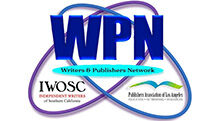 by Bobbie Christmas
by Bobbie Christmas
Q: How do you use single quotation marks to indicate significance? Which of the following is correct?
- He nodded ‘yes.’
- “I told him ‘hello.'”
- ‘Safety’ is the operative word.
A: A trick question, this one is, but you can’t fool me. The only correct sentence is number two, but not because the single quotation marks indicate significance.
Let’s discuss single quotation marks. I don’t know where anyone ever got the idea they are ever used to imply significance. In American English, single quotation marks are used only inside double quotation marks, as in sentence two, to indicate dialogue quoting other dialogue.
Double quotation marks, when used around a word or words that are not actual quotations, mean something is used in an ironic way—not exactly as stated. For an example, Mary wanted to find a “good” gift for Sara, so she went to a thrift shop.
To emphasize a word or phrase, use italics, but let me be clear. Italics for emphasis should be used only on a rare occasion. It’s always better for the writing itself to add significance to a word or phrase rather than relying on italics, boldface, or all caps. Here is an example that uses writing rather than italics to add significance and make a point: Bert loved Chinese food so much that he did not merely learn to cook it himself; he even had a restaurant-style wok stove installed in his kitchen.
Here are the correct forms of the examples at the top of this question:
- He nodded yes. (no emphasis or quotation marks or italics needed)
- “I told him ‘hello.'”
- Safety is the operative word. [The word “safety” is written in italics in this accepted example.]
Q: When writing fiction, how do you say the time shown on a clock?
The clock showed 10:00 a.m.
The clock said 10:00 a.m.
The time on the clock was 10:00 a.m.
A: The only thing definitely wrong with any of those examples is how the time itself is handled. Chicago style says to write out the time of day in even, half, and quarter hours. Chicago style uses numerals for the time of day only when it gives an exact time, such as 10:02 a.m. For that reason the correct way to write the examples you sent would be the following:
The clock showed ten o’clock.
The clock said ten o’clock.
The time on the clock was ten in the morning.
As a developmental editor as well as a line editor, though, I’d be remiss if I stopped my answer there. I have more to say about the examples and about telling the time of day. Fiction should not involve a great many numbers. Numbers are more likely to show up in technical books. Creative writing dictates that writers should avoid anything that makes readers realize they are reading.
Strong creative writing relies on powerful verbs that show, rather than tell. Although all the verbs in the examples above are acceptable, the sentences could be handled more creatively while still following Chicago style.
Here are some suggestions:
He glanced at the clock and saw that he had only ten minutes to get ready for his ten o’clock meeting.
When she arrived for the party at ten, she found only a few people milling around.
When the alarm shook him out of bed, it read ten o’clock.
To complete this treatise on times of day, let me add the following examples to see how to use other times of day correctly:
The train pulled into the station at 10:07 p.m.
Who sleeps until ten thirty in the morning?
Bobbie Christmas, book editor, author of Write In Style: Use Your Computer to Improve Your Writing, and owner of Zebra Communications, will answer your questions, too. Send them to Bobbie@zebraeditor.com. Read more Ask the Book Doctor questions and answers at www.zebraeditor.com.
